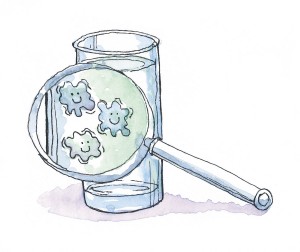PH Water testing services call 904-993-3433
ASAP WATERING TESTING
can test your water, here is a list of different water tests:
ALL OF THESE TESTS ARE QUOTED SEPERATELY and independently of each other, we do not have an all encompassing test.
PH TESTING
BACTERIA TESTING
LEAD
MERCURY
non volatile organic compounds. NVOC
Volatile organic compounds, VOC
Nitrites
NITRATES
phospherous
well testing
flow testing
coliform testing
FHA MORTGAGE WATER COMPLIANCE
VA MORTGAGE WATER COMPLIANCE
full spectral analysis
Call 904-993-3433
What Is Coliform Bacteria?
Generally, there are two categories of coliform bacteria that are found in well water, total coliform, and fecal coliform or E.coli.
Total coliforms are found naturally in the environment and are found in the soil, in water that has been influenced by surface water, and in human or animal waste. The presence of total coliform, by itself, doesn’t imply that the resource is contaminated, but it can reveal that one, if not more of the more serious types of harmful bacteria, such as fecal or E. coli bacteria, may be present.
Fecal coliforms are the group of the total coliforms that are considered to be present specifically in the gut and feces of warm-blooded animals and are considered a more accurate indication of animal or human waste than the total coliforms.
Escherichia coli (E. coli) is the major species in the fecal coliform group and is considered to be the best indicator of fecal pollution and the possible presence of pathogens. Most coliform bacteria do not cause disease.
However, some rare strains of E. coli, particularly the strain 0157:H7, can cause serious illness. Recent outbreaks of disease caused by E. coli 0157:H7 have generated much public concern about this organism. E. coli 0157:H7 has been found in cattle, chickens, pigs, and sheep. Most of the reported human cases have been due to eating undercooked hamburger. Cases of E. coli 0157:H7 caused by contaminated drinking water supplies are rare.
Coliform Bacteria Testing: Why do it, How to do it, & How Often?

Health authorities strongly recommend annual coliform bacteria testing for private water wells as contamination can occur without any change in taste or odor to the water. There are many ways that well water can become contaminated by coliform bacteria, but it is most important to test:
- Once a year for all private residential water wells
- After a new well has been constructed
- After recent work has been done on the well
- If you suspect or see any indication that contamination has taken place, such as if the well was covered with flood water.
What Is Coliform Bacteria?
Generally, there are two categories of coliform bacteria that are found in well water, total coliform, and fecal coliform or E.coli.
Total coliforms are found naturally in the environment and are found in the soil, in water that has been influenced by surface water, and in human or animal waste. The presence of total coliform, by itself, doesn’t imply that the resource is contaminated, but it can reveal that one, if not more of the more serious types of harmful bacteria, such as fecal or E. coli bacteria, may be present.
Fecal coliforms are the group of the total coliforms that are considered to be present specifically in the gut and feces of warm-blooded animals and are considered a more accurate indication of animal or human waste than the total coliforms.
Escherichia coli (E. coli) is the major species in the fecal coliform group and is considered to be the best indicator of fecal pollution and the possible presence of pathogens. Most coliform bacteria do not cause disease.
However, some rare strains of E. coli, particularly the strain 0157:H7, can cause serious illness. Recent outbreaks of disease caused by E. coli 0157:H7 have generated much public concern about this organism. E. coli 0157:H7 has been found in cattle, chickens, pigs, and sheep. Most of the reported human cases have been due to eating undercooked hamburger. Cases of E. coli 0157:H7 caused by contaminated drinking water supplies are rare.
What Should be Done if Coliform Bacteria are Detected in Your Well?
If E.coli or fecal coliform are detected in the drinking water, the first step should be an emergency chlorination, which can last two to five days. At the same time a system is being disinfected, it is recommended to vigorously boil the drinking and cooking water for one minute before using it.
It is also very important to continue testing the water because if anything happens to the chlorine residual, or if the chlorine-demand changes and the consumer doesn’t know about it, the water can become unsafe again. However, If fecal coliform or E. coli are detected in well water, the first step should not only be to disinfect your system but to identify the source of your bacteria contamination.
What Kinds of Defects Can Allow Contamination?
- A missing or defective well cap – seals around wires, pipes, and where the cap meets the casing may be cracked, letting in contaminants
- Contaminant seepage through the well casing – cracks or holes in the well casing allow water that has not been filtered through the soil to enter the well. This seepage is common in the wells made of concrete, clay tile, or brick
- Contaminant seeping along the outside of the well casing – many older wells were not sealed with grout when they were constructed
- Well flooding – a common problem for wellheads located below the ground in frost pits that frequently flood during wet weather.
Long-Term Options for Dealing with Bacterial Contamination of a Well
- Connecting to the regional public water system, if possible
- Inspecting wells for defects and repairing them if possible
- Constructing a new well
- Installing continuous disinfection equipment
- Using bottled water for drinking and food preparation